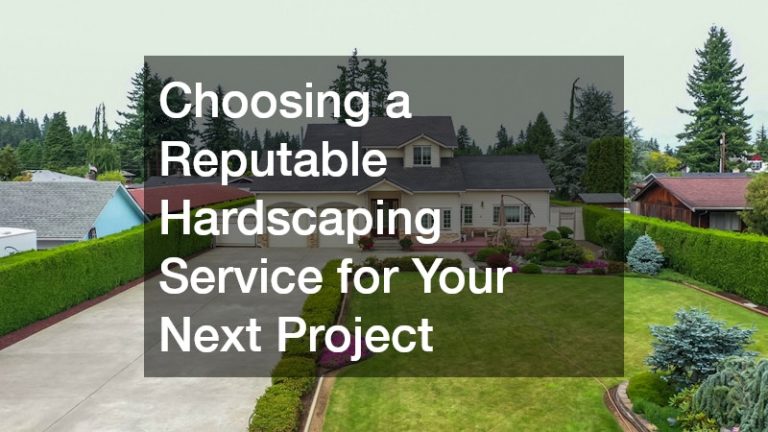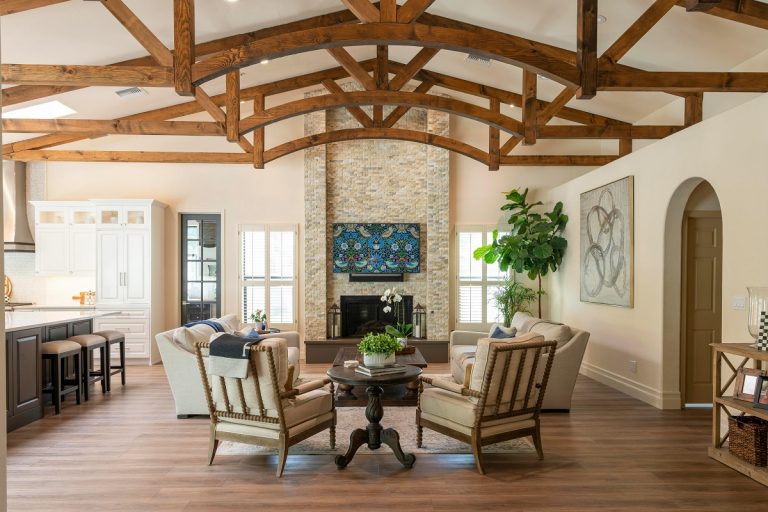

Colombia is revolutionizing the ways we think about sustainable homes. A Bogotá construction company, Woodpecker, introduced new, lightweight housing materials made out of a combination of recycled plastic and coffee husks. Workers snap the plastic and coffee husk boards onto a steel frame. Construction is fast, simple, and efficient. The lightweight design makes it possible for the company to build and transport these new houses just about anywhere. The company does all this “while simultaneously reducing food waste-based methane emissions,” LIVEKINDLY reports.
Using coffee husks doesn’t just curb food waste, either. Coffee husks are an ideal building material. Bugs do not like the hardy, dry fiber, it is fireproof, and it is widely available, particularly in Colombia. The country is one of the top three coffee growers worldwide.
Of course, you do not need to make your home out of coffee husks for it to be sustainable. There are several other ways you can lessen your house’s carbon footprint. Follow these tips when creating a sustainable home.
Undergo an Environmental Home Inspection

You may be familiar with a run-of-the-mill home inspection, but did you know that you can invest in an inspection that is solely intended to keep you and your family safe while benefiting the environment? Environmental home inspections go above and beyond a typical home inspection, testing your home for gases and materials that are hazardous to the environment and your health but not necessarily illegal.
First, check for mold. Whether areas in your home are exposed to excess moisture or your home recently or not-so-recently suffered from flooding and water damage, there may be large concentrations of mold present in your home without your knowledge. That is where mold testing comes in. Mold tests use different methodologies to detect all mold in your home, whether you can see it or not. Professionals may conduct a visual inspection of areas likely infected with mold, test the air for mold spores, or take samples to confirm the presence of mold. Some molds are toxic and release hazardous mycotoxins into the immediate environment. Remove mold first, then invest in residential water damage repair to fix structures inside your home and prevent mold from growing or building up in the future.
Secondly, check for radon. Radon is an invisible gas, it is odorless and tasteless, and it is just about impossible to detect. In fact, the only way it can be detected is through a series of professional tests. During an environmental inspection, professionals may place radon monitors in various areas throughout your house. The monitors must remain in place for at least 48 hours. All doors and windows must be closed. On an environmental level, large concentrations of radon can end up in the air and ultimately pollute groundwater. Further, radon is toxic to humans, and it is the second most likely cause of lung cancer after cigarettes and smoking.
Finally, check for asbestos. To test for asbestos, inspectors will start with a visual examination. From there, they will take samples of any suspicious materials and those materials will undergo lab testing.
If the results are positive, homeowners can take the necessary steps to begin the asbestos removal or asbestos ablation process. Left unchecked, asbestos may cause lung cancer or respiratory diseases, like asbestosis. During construction or whenever it is being handled, it may permeate the local environment, contaminating the surrounding air, soil, and water.
Complement your environmental home inspection with complete tree service. After taking the appropriate steps to remove asbestos, mold, and radon from your home, planting and caring for new trees near your home helps release more oxygen into the atmosphere and purify the air.
Creating a sustainable home starts with identifying its problem areas. Work with an inspector to find out what toxic materials are lurking inside your house.
Insulate Your Home
Insulating your home can make an incredible difference. By adding insulation, you can lower your energy bills and significantly reduce the energy used by your household heating and cooling system.
To insulate your home, first determine how much insulation you already have. There are several ways you can get hold of this information. If you recently purchased your home, refer to your home inspection. The home inspection will likely point out where you have insulation in your home, how much insulation you have, what type it is, and how thick it is. If you have lived in your home for several years, an energy audit can help determine the same information.
Then, seal attics and crawl spaces. Without properly air sealing your home, insulation will only help so much. Air will continue to leak out of drafty attics and crawl spaces. To seal the areas around pipes, wires, and HVAC ducts, use fire-blocking sealant or caulk. Seal the attic door or hatch with weatherstripping. Doors and windows are also notorious for air leaks. If your front door or back door is especially drafty, consider door replacement to completely address the problem and to lower monthly energy bills.
Finally, if at all possible, insulate your home with loose-fill insulation. Loose-fill insulation is best for the environment. It is more effective than other types of insulation, and it has the lowest environmental impact. Specifically, the National Park Service (NPS) advises homeowners to use recycled newspaper or loose-fill cellulose. Work with insulation installation services to install loose-fill materials in all the appropriate places inside your home.
Don’t overthink it when creating a sustainable home. Some of the most effective solutions are also the simplest solutions. Insulate your home to prevent energy from needlessly escaping, to use less energy, and to ultimately do your part for the environment.
Cut Down On Energy Use

Often, the key to creating a sustainable home is to do whatever you can to cut back on your energy use. This takes many different forms. To maximize the energy-efficiency of your home, first consider your HVAC system. A neglected HVAC system uses far too much energy. To keep your heating and air conditioning running at their best, schedule biannual inspections and replace air filters frequently. Inspections help identify problems when they first occur. Addressing problems right away helps make certain that your system is running as effectively as it can instead of using significantly more energy to compensate for a broken fuse, coil, or compressor. Likewise, replace your air filter every 45 to 90 days. Change it sooner if you have allergies or notice your bill going up. A dirty filter will also result in your system working harder than it needs to.
Install energy-efficient appliances and low-flow faucets and toilets. Look for appliances that are ENERGY STAR-certified. Replace old fixtures with low-flow faucets and low-flow toilets. Low-flow faucets use 700 fewer gallons of water per year, and a low-flow toilet can save you as much as $2,000 over time. Finally, take another look at your roof. If your energy bills are unreasonably high, it may be time to speak with a roofing contractor. For roof-related energy savings, install a radiant barrier and/or carefully consider the color of roof shingles. A silver, radiant barrier reflects significantly more sunlight and heat away from the surface of your home, ultimately reducing your energy bills. Similarly, light-colored roof shingles reflect more light and that will help lower your cooling and energy costs as well.
Reducing your overall energy use is critical to creating a sustainable home. Use any of the tips above to keep your energy use to a minimum.
Consider Solar Panel Installation

Another option when creating a sustainable home is to install solar panels.
The exact energy savings from solar panels vary from state to state. For example, Texas, Nevada, California, and Florida get the most sun, and homeowners are likely to experience the most savings in these states. On the low end, solar panels will save homeowners roughly $10,000 over a span of 20 years. On the high end, homeowners stand to save as much as $30,000. In addition to straight energy savings on utility bills, homeowners may also qualify for tax breaks for solar panel installation. Talk to the best tax attorney in your local area about tax breaks from solar panels.
If you choose to move forward with solar panels, a solar panel installation company will visit and examine your home, draft all appropriate paperwork, schedule your installation and order any equipment or panels specific to your home, install solar panels, and then test them to make sure they are working properly.
Prioritize Recycling

Another important thing to consider when creating a sustainable home is recycling. To reduce your environmental impact and ensure you are truly creating a sustainable home, recycle the right way.
To recycle properly, firstly, never, ever put plastic bags into the recycling bin. Never recycle plastic bags in your curbside recycling bin. These plastic bags get stuck in sorting machinery, and they break down into toxic microplastics, meaning that they are not truly 100% recyclable. If you store anything inside plastic grocery bags, it is standard procedure for recycling companies to discard the entire bag, including any materials inside. If you wish to recycle plastic grocery bags, there are designated areas to do that. For example, many grocery stores will allow you to drop off bags so they can reuse them.
Secondly, thoroughly clean and rinse recyclable containers, removing all food waste. If glass containers or plastic bottles are that recyclables have any remaining food waste, companies discard them. Recyclables with traces of food waste account for one-fourth of once recyclable materials that end up in landfills instead.
Then, take out your credit card. Finally, a little-known fact is that there are certain limitations on the size of recyclables. As a general rule, items must be the size of a credit card or larger to make it through the recycling process. Companies toss small items, like bottle caps, paperclips, coffee pods, and straws. You can ensure that bottle caps are recycled by screwing them onto plastic or glass bottles tightly before recycling.
Finally, follow the instructions on your county- or state-issued recycling bin. In most areas with curbside recycling, your local county or state will issue you a recycling bin or several recycling bins. These bins come with stickers specifying what is and isn’t acceptable. Read and follow these directions.
Drive Less
Sometimes, creating a sustainable home is about the people inside it. Your home does not exist inside a vacuum. The people inside your household impact just how sustainable it is. To keep your household as eco-friendly as possible, drive smart and drive less. That means taking advantage of vehicle financing to purchase a hybrid, low emissions, or electric vehicle. Whenever possible, carpool with other family members or with friends. Walk or bike to nearby destinations. It is healthier for you and markedly better for the environment.
Shop Local

Our last bit of advice is to shop small and to shop local. Big companies and major retailers are most concerned with manufacturing and distributing their products on a large scale. Things like using environmentally friendly packaging, reducing packaging, or using energy-efficient manufacturing processes often fall by the wayside.
Small businesses in your local area, on the other hand, know the importance of attracting new customers and retaining them. They value the business of each and every customer, and, therefore, they go out of their way to satisfy them. More and more often, that includes using less packaging and eco-friendly practices and materials.
As you work toward creating a sustainable home, ask the people inside it to reconsider their day-to-day actions and purchases. The next time you custom order birthday shirts, find a small, local business with sustainable practices to do it for you. Avoid big box retailers that are most concerned about their bottom line.
What is the secret to creating a sustainable home? There isn’t a single trick that will tip you over the edge. Instead, consider the sum of your actions and the sum of all your home’s parts. Do your part for the environment by reducing your home’s energy use, insulating your home, installing solar panels, and asking your family members to recycle, drive less, and reconsider purchases from big box stores.





